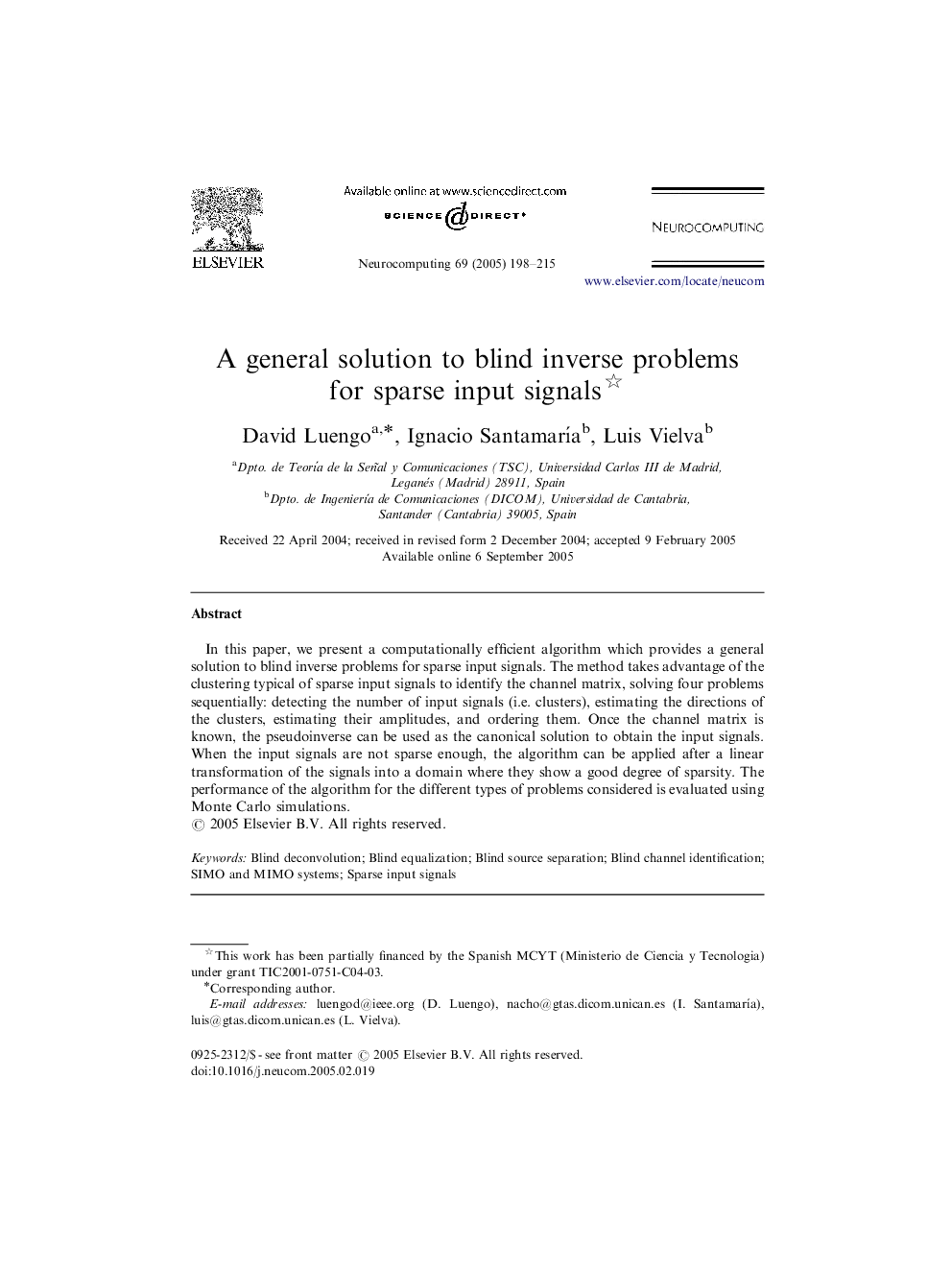| Article ID | Journal | Published Year | Pages | File Type |
|---|---|---|---|---|
| 9653369 | Neurocomputing | 2005 | 18 Pages |
Abstract
In this paper, we present a computationally efficient algorithm which provides a general solution to blind inverse problems for sparse input signals. The method takes advantage of the clustering typical of sparse input signals to identify the channel matrix, solving four problems sequentially: detecting the number of input signals (i.e. clusters), estimating the directions of the clusters, estimating their amplitudes, and ordering them. Once the channel matrix is known, the pseudoinverse can be used as the canonical solution to obtain the input signals. When the input signals are not sparse enough, the algorithm can be applied after a linear transformation of the signals into a domain where they show a good degree of sparsity. The performance of the algorithm for the different types of problems considered is evaluated using Monte Carlo simulations.
Related Topics
Physical Sciences and Engineering
Computer Science
Artificial Intelligence
Authors
David Luengo, Ignacio SantamarÃa, Luis Vielva,
